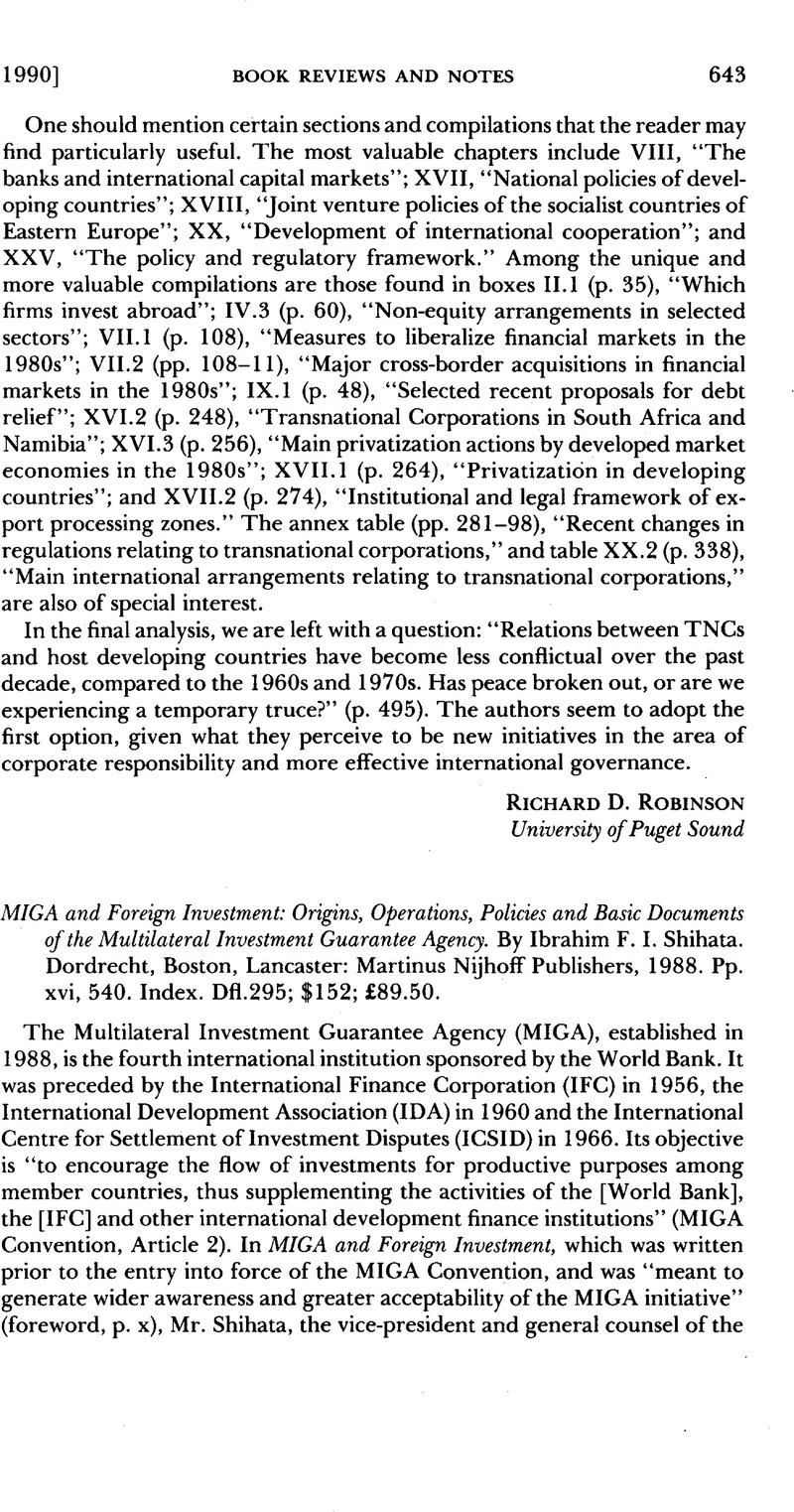No CrossRef data available.
Article contents
MIGA and Foreign Investment: Origins, Operations, Policies and Basic Documents of the Multilateral Investment Guarantee Agency. By Ibrahim F. I. Shihata. Dordrecht, Boston, Lancaster: Martinus Nijhoff Publishers, 1988. Pp. xvi, 540. Index. Dfl.295; $152; £89.50.
Review products
Published online by Cambridge University Press: 27 February 2017
Abstract

- Type
- Book Reviews and Notes
- Information
- Copyright
- Copyright © American Society of International Law 1990
Footnotes
Retired in 1979 as Vice-President and General Counsel of the World Bank.
References
1 This common understanding was wholly ignored by the U.S. implementing legislation, which recognized “that United States participation in the Agency represents an effort to enhance United States trade prospects and strengthen the role of the United States private sector in the development process,” and called for “regular and continuing consultations” with private-sector and labor representatives “on policy directions and operations of the Agency” (22 U.S.C. §290k–4 (Supp. V 1987)).
2 The author’s description and evaluation of earlier attempts and of his own role are found in part 1, “The Making of MIGA: A Case Study of the Preparation and Acceptance of a Multilateral Financial Convention” (pp. 29–106).
3 The Convention expresses capital in terms of Special Drawing Rights (SDR), but this is misleading since contrary to the very object and purpose of the SDR, its value is pegged permanently at $1,082 (Article 5(a)).
4 Recognizing that 80% of subscriptions is not paid in but is only subject to call, the author envisages that MIGA may have to resort to “bridge financing until payments by members are made on calls related to obligations resulting from guarantee operations” (p. 210). For such financing to be available, the lenders must presumably be satisfied that the reasons for the delay do not raise doubts concerning the performance of the members’ obligations to respond to calls.


